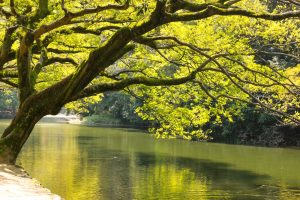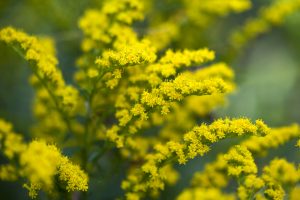By Susan Mctavish, for Sustainable Orillia
It’s well-documented that there has been a massive decline in biodiversity over the last few decades. Fifty years ago I saw and heard large numbers of insects, birds and other creatures I seldom see or hear now.
Most of the meadows and fields that supported many species of birds have been replaced with monoculture industrial agriculture. Crops are usually genetically modified to withstand spraying of glyphosate (created by same company that created agent orange) to kill competing weeds—“weeds’ that would have supported many insects and birds.
Other natural areas have been paved over or replaced with housing or commercial developments. These are not designed to have landscapes that will compensate for what was removed from nature. Instead we have chemically treated lawns, plants from box stores that are treated with chemicals or of modified varieties that are sterile and unappealing to insects and birds. Even rural homes often have vast areas of mowed lawns abutting industrial style agricultural fields with no buffer areas or edges of natural field or meadows. Many have rented parts of their land to industrial farming. Gone are the bobolinks, meadowlarks, and many other field birds. Field, meadow and grassland habitats are some of the most threatened on the planet.
The days of family-run mixed farms are dwindling. These once had a variety of fruit trees, vegetable gardens, pastures and hedge rows that supported many birds. One can still see the odd apple tree spotted across the southern Ontario landscape as a reminder of a more richly diverse time.
What was once a dense network of thriving habitats across the continent has been reduced to smaller, less diverse and widely-spaced areas that must support migrating birds and insects. Buildings, glass, light pollution and roadways amplify migrating challenges.
Even in Orillia our natural spaces are disappearing. Field/meadow areas are not conserved or integrated into the master plan. Instead these green fields are pegged for development. These empty lots are usually filled with plants, insects and birds as well a wide spectrum of small critters. Unfortunately, they can look untidy or invite vagrants or littering. They are often groomed while awaiting development. Many are cut, even though plants such as milkweed are supporting monarch butterfly larvae and small shrubs and weeds are hosting bird nests. One sweep can wipe out much diversity.
Rather than seeing the value of these spaces, we instead plant little pollinator gardens in parks as a token effort to compensate.
Many supportive habitats for birds have tangled weeds, bugs we judge as unpleasant, along with fruiting and nut trees we no longer plant. Decaying or dead trees and plant materials host bird nests or provide bugs for hungry birds. We’ve reduced the complexity of natural habitats to simplistic, controlled spaces that cannot support the diversity of nature. Even our trails, once filled with insects and birds, have been void as of late.

There are some positives. One of the side effects of COVID stay at home orders is a greater focus on one’s own space—an opportunity to become more mindful and observant of the goings-on in our yards. More people seem to be gardening and feeding birds. It’s amazing how you can make a huge difference with your own yard. If each of us appreciated and introduced more biodiversity into our yards or properties, we could regenerate a network of biodiversity spaces across the city and province. It doesn’t have to be a labour-intensive effort. Many times nature will design itself and we just need some addition of order. It’s like taking a middle ground attitude as opposed to manicured perfection.
This is the attitude I’ve taken with my own yard. I’ve tried to create an environment that will support birds and insects while at the same time fitting into the need for city ‘order’ or tidiness. I will share some my own tips, trials and learnings regarding this in the next Tip of the Week.
